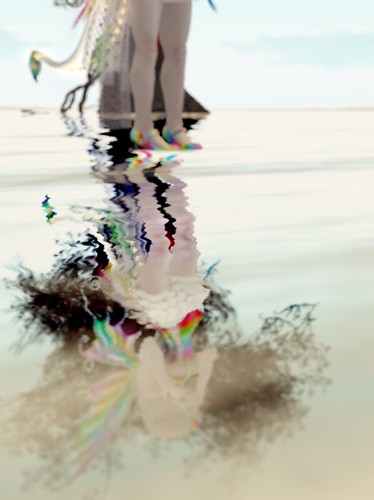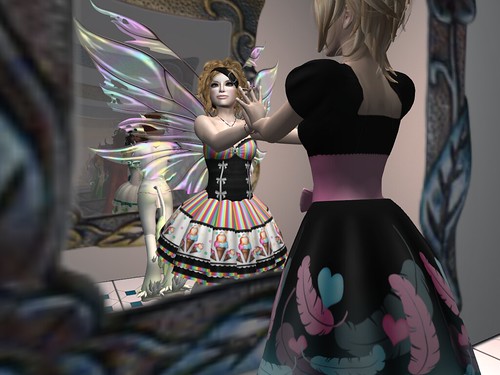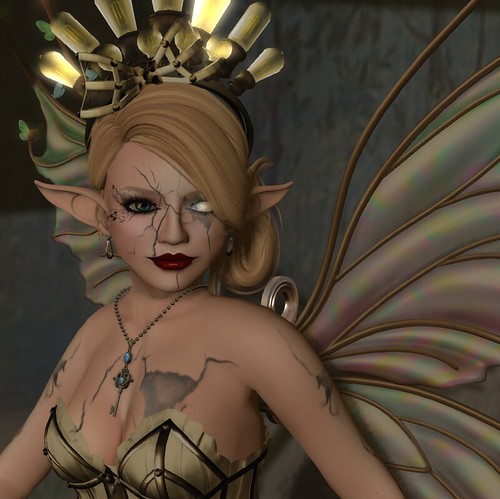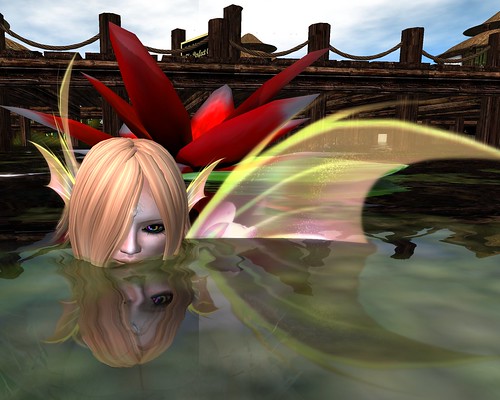Saturday, June 7, 2014
Avatar Appearance: Human, Humanoid, and non-Human in Second Life
Canary Beck (post one, post two) raised a few interesting questions about avatar appearance, inspired by the new Full Mesh Avatars for new players released by Second Life. Over the years I've read varied opinions and responses to avatar appearance - most of them involving critique of disliked qualities in others' appearances with a subset lamenting the preponderance of humans. More interesting are the rules for access and inclusion in various Second Life Communities. Far from being a free landscape for expression of imagination, rules for a lot of sims actively attempt to exclude certain sub-groups in Second Life, or to at least render them invisible by asking them to remove all non-human and non-adult markers. In addition, the majority of starter avatars and the base for avatars in general all emphasize white human of a certain size and shape; while a variety of communities have altered the basic avatar for their own ends, it is significantly easier to remain human, or at least humanoid, adult, thin, and pale skinned. All of this sets up a landscape where a limited norm is emphasized, both explicitly and implicitly.
In terms of expressing ourselves, then, the landscape is already shaped by a reality which both includes it's own prejudices about class, race, ethnicity, and age - and which adds in additional prejudices against people in different sub-groups in order to exclude them from places and events. In terms of expressing oneself, and the freedom to do so, these basic realities are important to keep in mind; subtle and explicit social enforcement strongly effect how people chose to express themselves. Given the level of control one has over appearance in Second Life, people tend to over-specialize their appearance, not only choosing how to look based along very narrow lines and types of communities, but also often creating a Super-normal Stimulus which communicates facts about ourselves in All Caps while not conforming to natural shapes and sizes - for example, notice the differences in size between male and female avatars in Second Life overall. Women tend to be half the size of men, which is an exaggeration of a slight difference in size of which there are numerous exceptions in reality (this difference also shows up frequently in comics and cartoons). This is gendered in the sense that it both posits two genders and characteristics are assigned to these two genders, but not-gendered in the sense that many men and women chose to express themselves in Second Life in the "other" gender, exploring what it is like to express themselves and be perceived as other than what they are.
Appearance is a facade, but it is also deeply important; it shapes how we view others and how we view ourselves, it shapes where we are welcome and unwelcome, it shapes what we think we should do and what we think we shouldn't do - what we will be socially punished for and what we will be socially rewarded for. There are sub-groups where the rules switch up, yes, but often those sub-groups protect themselves from outsiders using a very similar set of actions towards those perceived to be different, and sometimes the "rules" for who is included and who is not can rip a social group apart. The acronym G I R L (guy in real life), for example, is often used as a multi-layered critique, both of how someone presenting as a woman "should" look and behave, and of the presumed act of presenting as an "inaccurate" gender. This judgement on an avatar makes several assumptions which may or may not be accurate (a woman may, after all, chose to create a Super-normal Woman form online for a variety of reasons) and also reinforces the idea that men and women are fundamentally different and people who attempt to subvert that are undesirable. Similarly, critiques about the choices people make in their avatars often reinforce other social norms, from class assumptions about what an acceptable person wears, to sexist assumptions about what men and women should be like, to racist generalizations about people of color and their exclusion from most places both culturally and in terms of appearance (even while exaggerated "black" markers show up in fashion, for example large lips and a large butt).
We often like to talk about appearance in Second Life as if it were unfettered and separate from anything in First Life, and as if there was a balanced and even landscape upon which people make decisions about what we want to look like. Different things, from the starting avatar's appearances, to what is available in world, to how one is treated in different contexts will affect the choices we make about how we want to look. Most interesting to me these days is the internal cultural dynamics in Second Life, where we have near-complete control over how we look. One of the things I found striking is that the most excluded populations on Second Life - the Furries and the Tinies, who are often barred from sims either explicitly and implicitly - also tend to be the most welcoming of differences. I have less experience with Furries, though they never minded a not-furry fairy in their clubs so far as I experienced, but Tinies are explicitly welcoming to Biggies, both in terms of setting up their sims so that there are seats for standard sized avatars, and by being friendly and welcoming to everyone who comes, regardless of appearance.
This is in marked contrast with many human dominated spaces. I vividly recall a fashion model on a runway, for example, talking about how she had to shave herself and make herself look human in order to be a model; imagine the "buzz" that could have occurred if the creator had welcomed her natural shape and appearance, both in terms of broadening who might purchase her clothing, and in terms of setting herself apart from standard fashion. Likewise, there have been several photography contests which explicitly exclude non-standard avatars, even the only slightly non-standard like myself, where I have added only ears and wings to a basic human shape. The reason given was that "real" humans don't have these characteristics, which is an interesting and common link between offline and online life. In addition, there are many sims which exclude people who look different; I have been asked to leave places, either because my shortness and non-sexy dress made them assume I was a child, or because the walks in my AO are flying and they strictly control who can fly. Several conversational spaces and clubs also ask for human avatars only, or if non-human attributes are allowed, they are highly limited to the sort of simple additions like I have - ears, or wings, or perhaps odd hands or a small tail.
I don't have an easy way to figure out why so many spaces in Second Life are explicitly or implicitly "adult human only"; exclusions like children from adult sims has an internal sense, but why a tiny shouldn't attend a philosophy discussion I have no idea. Some comments made about the population of Second Lifer's who chose to be children implies there is a sense of it being unnatural and bizarre, often with assumptions made about the intellect or morals of the players in question. Comments about Furries are often similar, along with assumptions about their sexual behavior or lack of manners. I've not met many who comment on Tinies, but their concentration and stalwart attitude of openness and respect for others speaks to it's own experience, and a determination to not repeat it. I am not surprised by the repetition and expansion of prejudice against people who look sufficiently different in Second Life, but I do sometimes wonder at it among people who I also believe, if asked, would say they are not prejudiced against anyone. This pattern repeats offline; people often consciously reject prejudice while unconsciously being prejudiced - we learn through observation and creation of heuristics, not a list of rules, by and large. Project Implicit, a program begun by Harvard to study and measure our unconscious biases and the degree to which they affect our choices of whom to associate with, is a fascinating source of information about the darkest parts of people - the parts we would rather not see.
( More pictures here. )
Subscribe to:
Post Comments (Atom)





Good post exploring a very interesting topic! And thank you for the reference.
ReplyDeleteDefinitely a lot of food for thought. Thanks for stopping by.
Delete